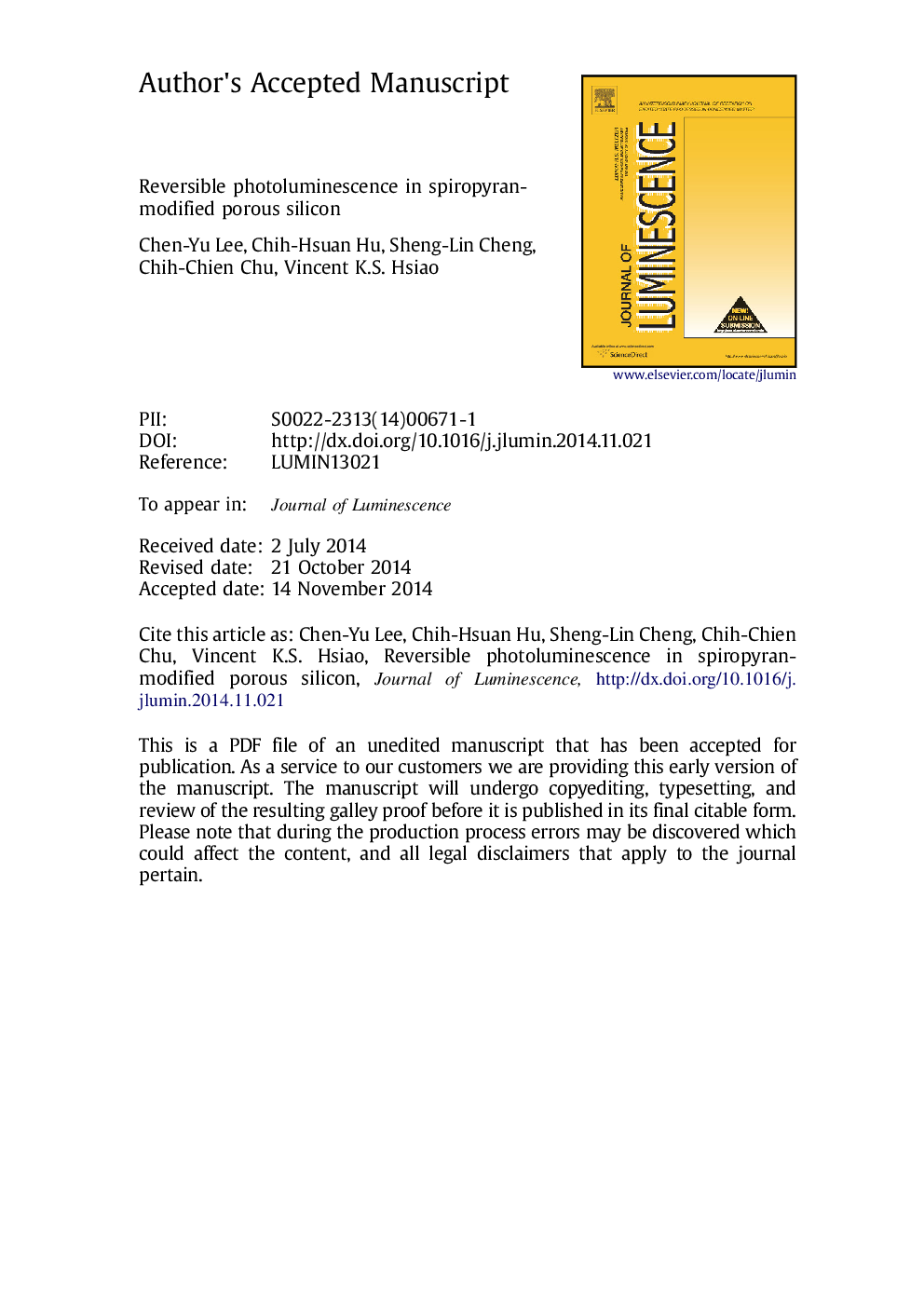| Article ID | Journal | Published Year | Pages | File Type |
|---|---|---|---|---|
| 5399633 | Journal of Luminescence | 2015 | 29 Pages |
Abstract
Spiropyran-modified porous silicon (spiro-PS) was used for the first time as an organic-inorganic hybrid material by using reversible photoluminescence (PL). Before spiropyran modification, the peak wavelength from PS was approximately 600Â nm. Subsequent spiropyran modification strongly quenched the PL intensity, from 15,000 to 2000 counts. However, under UV light irradiation, the PL intensity from spiro-PS was increased gradually to 20,000 counts because of the photoinduced ring opening from a colorless spiropyran (SP-form) to a colored merocyanine (MC-form). Furthermore, the resulting peak wavelength of the PL of an MC-PS sample red-shifted from 600 to 650Â nm, and the PL intensity was higher than that of unmodified PS. Because the fluorescence emission band (500-700Â nm) of PS substantially overlapped the absorption band (500-700Â nm) of the MC-form of spiropyran, the energy transfer from the PS (donor) to the open-ring-state MC-form (acceptor) occurs efficiently. The intensity of the PL from spiro-PS can be reversibly modulated using a heat stimulus. The current demonstrations have potential in reversible solid-state lighting or data storage applications.
Keywords
Related Topics
Physical Sciences and Engineering
Chemistry
Physical and Theoretical Chemistry
Authors
Chen-Yu Lee, Chih-Hsuan Hu, Sheng-Lin Cheng, Chih-Chien Chu, Vincent K.S. Hsiao,
